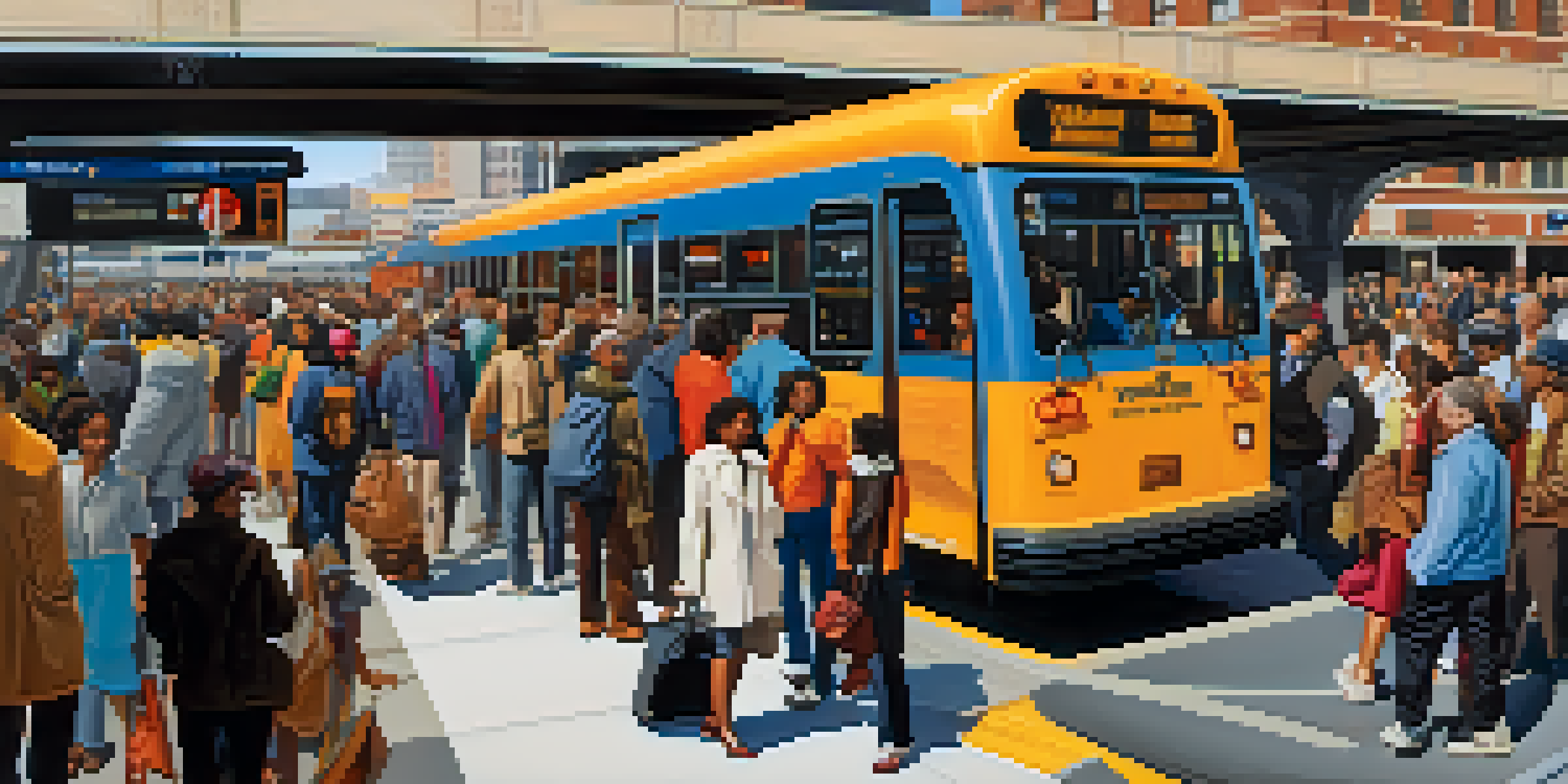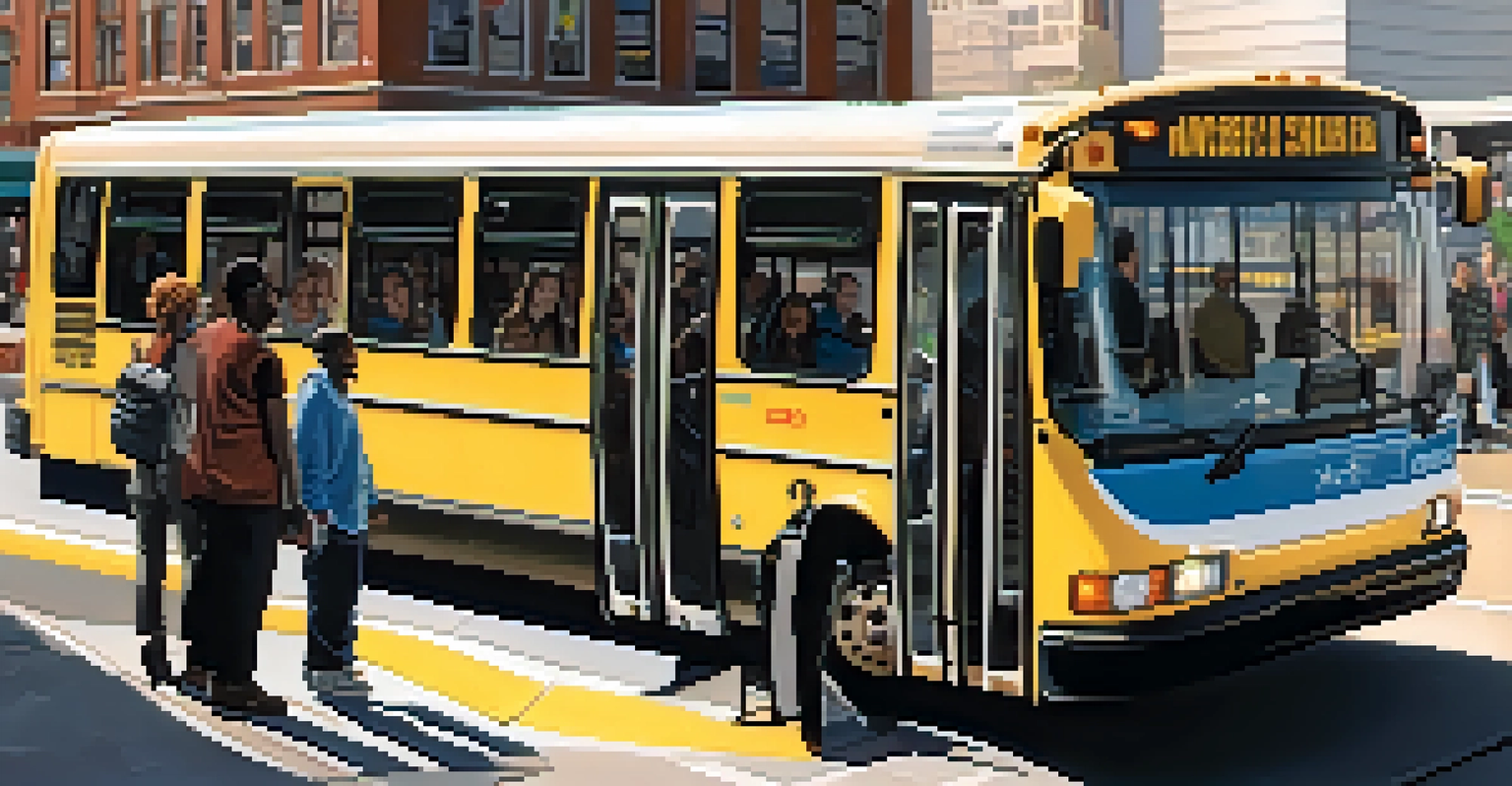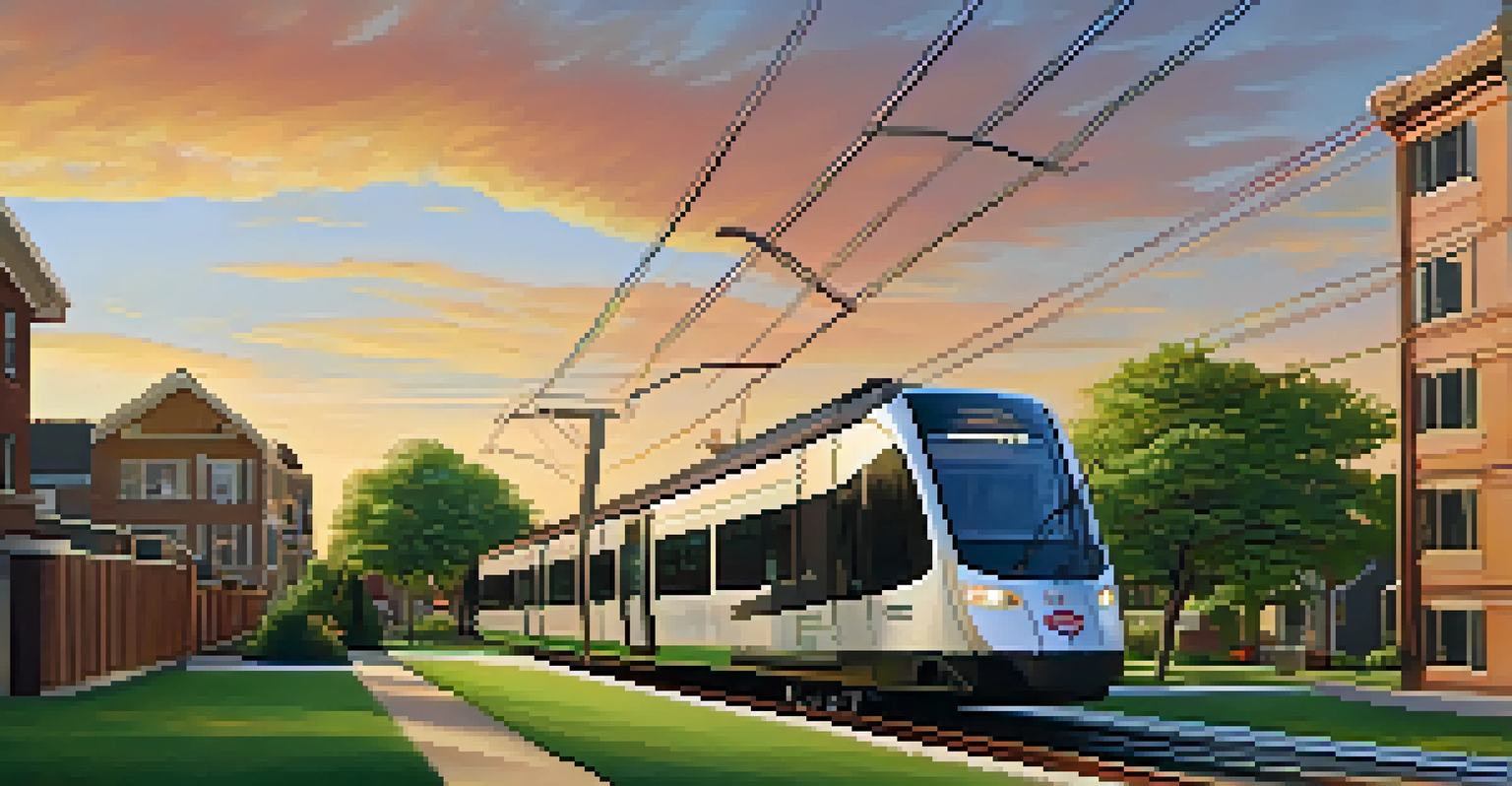Public Transit Challenges in Newark: An In-Depth Analysis

Overview of Newark’s Public Transit System and Its Importance
Newark's public transit system plays a vital role in connecting residents to jobs, schools, and essential services. With a diverse population relying on this network, understanding its functionality is crucial. However, like many urban transit systems, Newark faces unique challenges that impact daily commuters.
Public transportation is a lifeline for many, connecting people to jobs, education, and essential services.
From buses to light rail, the system is designed to facilitate movement across the city and beyond, making it an essential component of urban life. Yet, the effectiveness of this system often comes under scrutiny, especially during peak hours when overcrowding can become a significant issue. The reliability of transit services directly influences the quality of life for many Newark residents.
In this analysis, we will delve into the various challenges that Newark’s public transit system faces, exploring how these issues affect the community and what can be done to improve the situation. By shedding light on these obstacles, we hope to foster a better understanding of the system's critical role in Newark.
Service Reliability: The Backbone of Public Transit
One of the foremost challenges in Newark's public transit is service reliability. Commuters often experience delays that can disrupt their daily routines, leading to frustration and lost productivity. This inconsistency is often due to a combination of outdated infrastructure and high demand during peak travel times.

For instance, bus routes may frequently fall behind schedule, creating a ripple effect that affects not just those waiting but also the entire network. This unreliability can discourage residents from using public transit altogether, pushing them towards alternatives like personal vehicles, which can lead to increased traffic congestion.
Service Reliability is Essential
Inconsistent transit schedules often frustrate commuters, making it crucial to invest in technology and infrastructure improvements.
Improving service reliability requires investment in technology and infrastructure, such as real-time tracking systems and upgraded vehicles, to ensure that commuters can depend on transit services to arrive on time. Without these improvements, the cycle of dissatisfaction among users is likely to continue.
Affordability: Balancing Costs for Riders
Affordability is another pressing challenge in Newark's public transit landscape. While public transportation is generally seen as a cost-effective option, rising fare prices can pose a barrier for low-income residents. This dilemma highlights the need for a delicate balance between maintaining service quality and keeping fares within reach for all users.
The best way to predict the future is to create it.
Many Newark residents rely on transit for their daily commutes, and for those living paycheck to paycheck, even a small fare increase can significantly impact their budget. As a result, some may opt to forgo public transit and seek less reliable transportation methods, which can lead to greater long-term costs and increased financial strain.
To address this issue, city officials and transit authorities must explore options for subsidized fares or discount programs targeted at vulnerable populations. By prioritizing affordability, Newark can ensure that public transit remains a viable option for everyone, fostering greater access to opportunities.
Accessibility: Ensuring Transit for All Residents
Accessibility in public transit is crucial for ensuring that all residents, including those with disabilities, can navigate the city effectively. Unfortunately, many of Newark's transit stations and vehicles still lack the necessary accommodations to support individuals with mobility challenges. This oversight not only inhibits access but also sends a message that these residents' needs are not a priority.
For example, buses may not have wheelchair ramps, and stations may lack elevators, making it difficult for those who rely on assistive devices to use the system. This creates a significant barrier for many individuals, forcing them to seek alternative modes of transportation that may not be as reliable or safe.
Affordability for All Riders
Rising fare prices can pose significant challenges for low-income residents, highlighting the need for subsidized transit options.
Addressing accessibility issues requires a comprehensive review of the public transit system, including upgrades to facilities and vehicles to meet the needs of all riders. Ensuring that transit is accessible is not just a legal requirement; it is a fundamental aspect of creating an inclusive community.
Safety Concerns: A Growing Issue for Commuters
Safety is a critical concern for many who use Newark's public transit system. Reports of crime and harassment can deter potential riders from utilizing buses and trains, especially during off-peak hours or in isolated areas. This fear can lead to a significant decline in ridership, further straining the system.
Additionally, the perception of danger can create a cycle of decreased use, where fewer riders lead to less frequent services, which in turn can result in longer wait times and more dangerous conditions. Ensuring a safe transit environment is essential for building public trust in the system.
To combat safety concerns, transit authorities must consider increased security measures, such as more visible personnel, enhanced surveillance, and community outreach programs. By fostering a safer environment, Newark can encourage more residents to rely on public transit without fear.
Infrastructure Challenges: Aging Systems in Need of Upgrade
Newark's transit infrastructure is showing its age, with many systems requiring significant upgrades to meet the demands of modern commuters. From outdated vehicles to crumbling stations, the physical condition of transit services can greatly affect their efficiency and reliability. Poor infrastructure not only hinders service but can also lead to safety hazards.
For instance, malfunctioning equipment can cause delays and service interruptions, leaving riders stranded and frustrated. Additionally, aging infrastructure can lead to increased maintenance costs, diverting funds away from improvements and innovations that could enhance the overall experience for users.
Accessibility Must Be Prioritized
Ensuring that public transit is accessible to all, including those with disabilities, is vital for creating an inclusive community.
Investing in infrastructure is essential to ensuring that Newark's public transit can meet the needs of its growing population. This may involve seeking funding from state and federal sources to support necessary upgrades and maintenance efforts, ultimately leading to a more dependable transit system.
Community Engagement: Including Voices in Transit Planning
Community engagement is critical when it comes to addressing public transit challenges. Involving residents in planning and decision-making processes can lead to solutions that truly reflect the needs and desires of those who rely on the system. When the community feels heard, they are more likely to support transit initiatives and participate in their success.
For example, hosting town hall meetings or surveys can provide valuable insights into commuters' experiences and expectations. This feedback can guide transit authorities in making informed decisions about service improvements, route adjustments, and fare structures that resonate with the community's needs.

By prioritizing community engagement, Newark can build a transit system that not only serves its residents effectively but also fosters a sense of ownership and pride among users. Ultimately, a collaborative approach will lead to a more sustainable and responsive public transit system.
Future Solutions: Innovating Newark's Public Transit System
Looking ahead, Newark has the opportunity to innovate its public transit system to better meet the needs of its residents. Embracing new technologies, such as mobile apps for real-time updates and contactless payment options, can significantly enhance the rider experience. By adopting a forward-thinking approach, the city can position itself as a leader in modern public transit solutions.
Additionally, exploring partnerships with rideshare services or implementing microtransit options could address gaps in service, particularly in underserved areas. These innovations could provide more flexible transportation options, making it easier for residents to access essential services and employment opportunities.
Ultimately, the future of Newark's public transit system hinges on a commitment to continuous improvement and adaptation. By prioritizing innovation and community collaboration, Newark can develop a transit system that is not only efficient but also equitable and responsive to the needs of its diverse population.